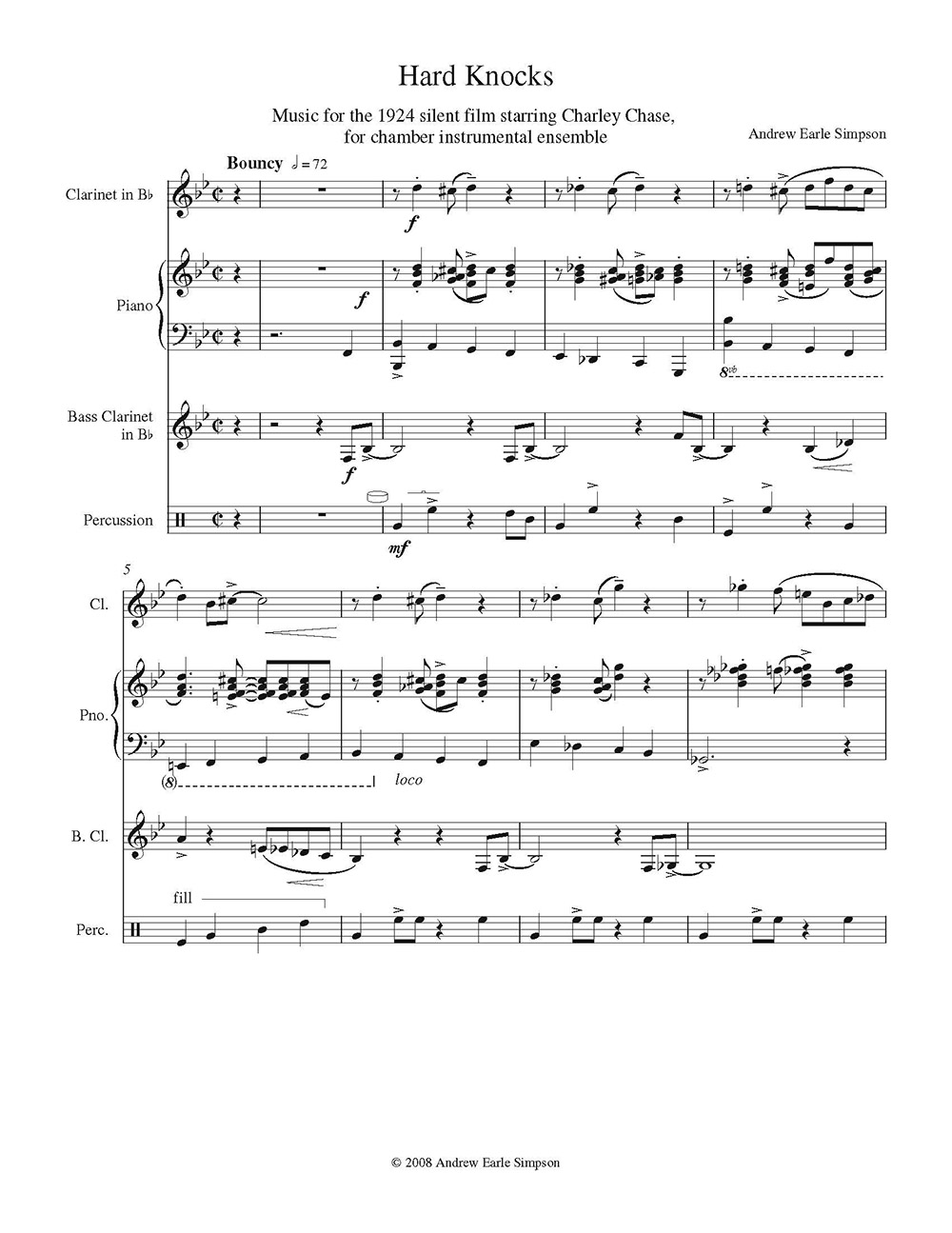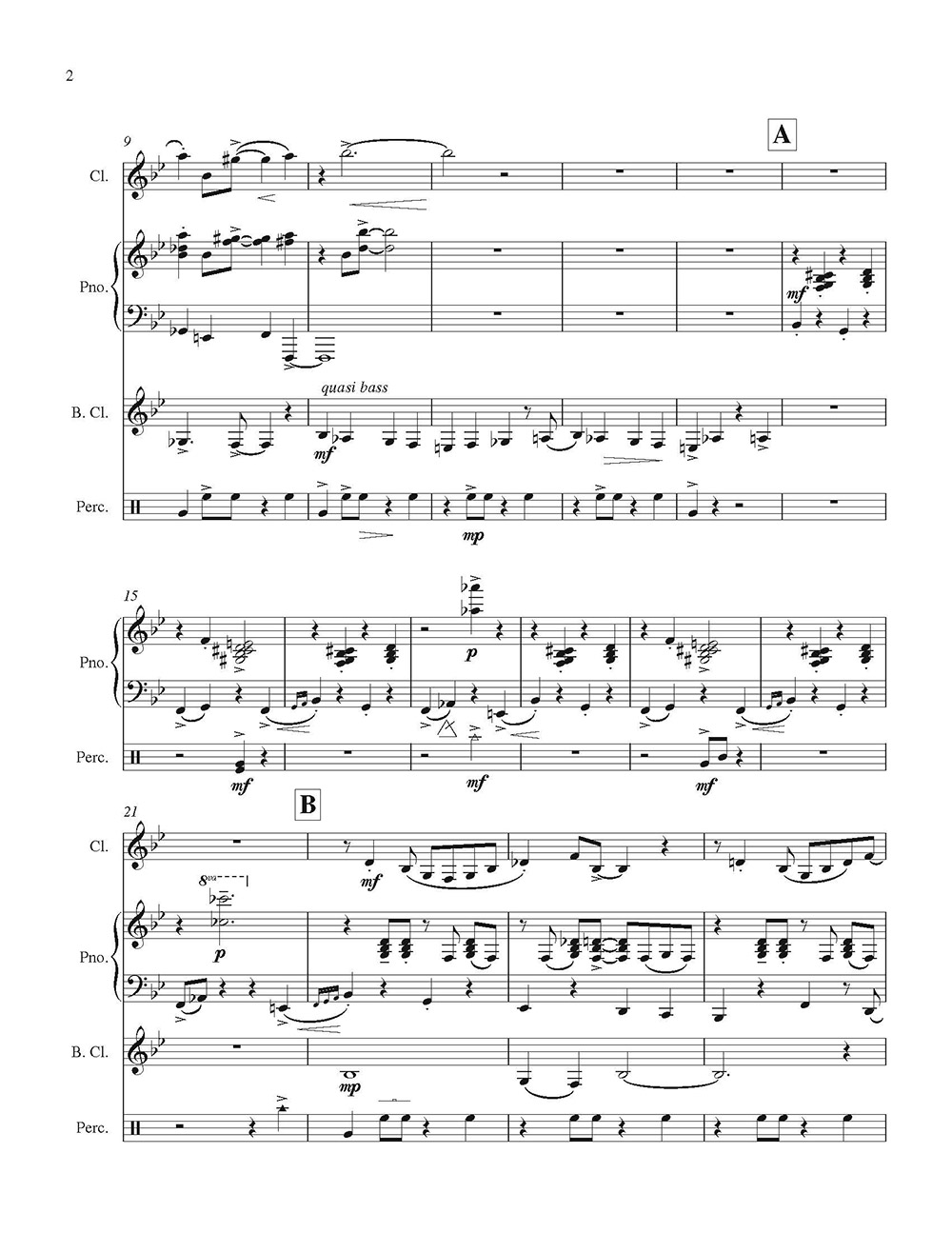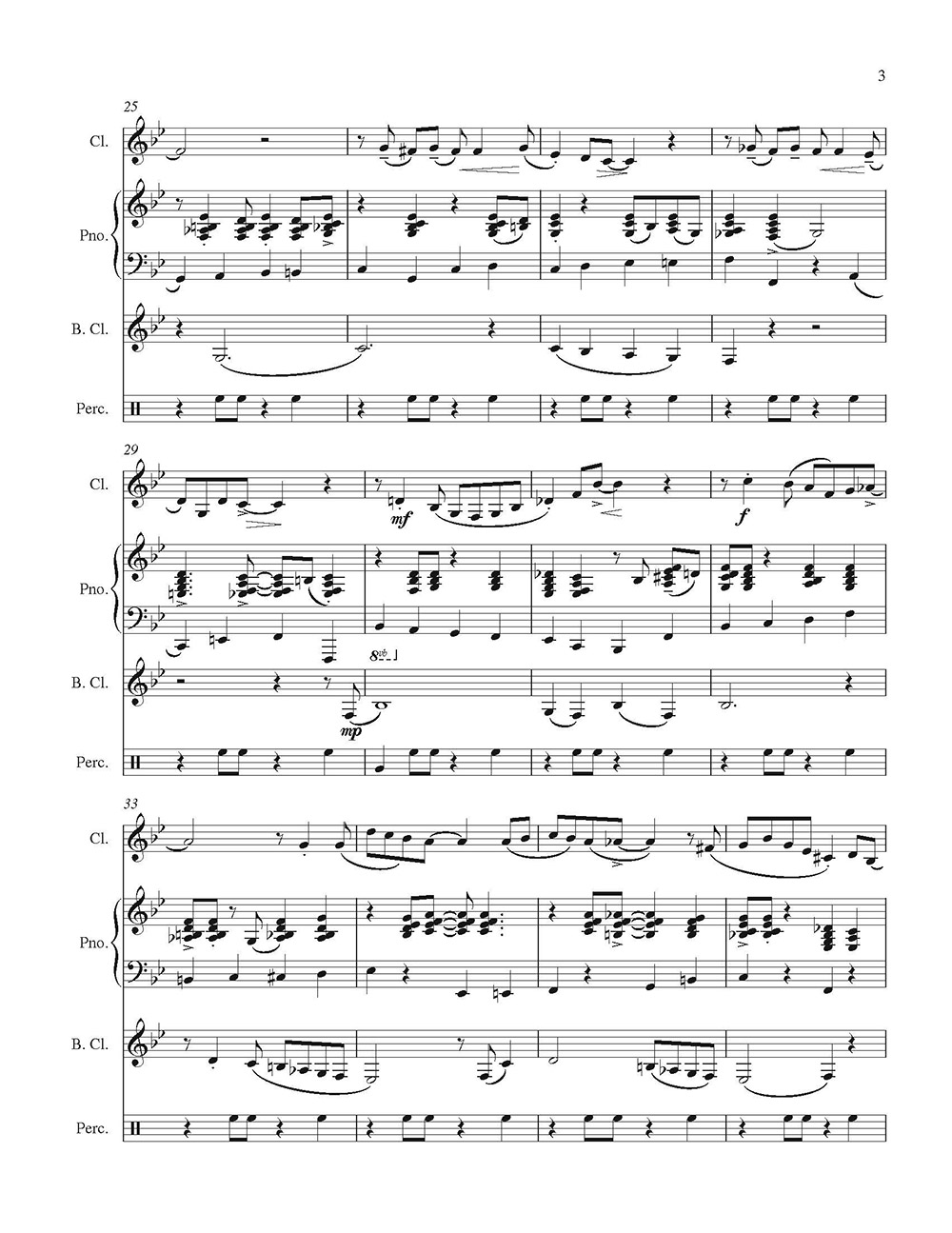Hard Knocks (2008)
for chamber ensemble, 11 minutes
Instrumentation
clarinet, bass clarinet, piano, percussion
DVD
Becoming Charley Chase, Allday Entertainment (distributed by VCI) (2009)
Film Synopsis and Musical Notes
This 1924 Charley Chase comedy shows the comedian in his classic, dapper-yet-somewhat-goofy persona, ever positive and winning.
Act I
Timid (and somewhat dim) Charley works in an office, and loves the boss’ daughter (Beth Darlington). His more forceful co-worker (Eddie Baker) establishes the difference between himself and Charley on payday by storming into the boss’ office and successfully demanding a raise. Encouraged to do the same, Charley comes up short. His co-worker is also Charley’s romantic rival.
Both men are invited to the boss’ daughter’s birthday party. Charley, trusting where he should not trust, asks his rival the meaning of “R.S.V.P.”
Act II
The next scene shows Charley driving to the party, obediently following the invitations’ direction, “Riding Suits Very Proper.” When ushered into the party (and the black-tie guests), he deals with the problem in slapstick fashion: simply knock out the snooty butler and change clothes with him!
A small set-piece ensues: a singer, and then Charley’s recitation of a poem, complete with dropping vest...
Following this humiliation, Charley (who we now see is the girl’s favorite), agrees to go back to the office and get “the ring” from the safe.
Act III
A shadowy figure is seen breaking into the safe in the dark office. Hearing someone approach, the figure hides. Charley enters to find the safe already open and cleaned out. He spots the figure in the dark... and timid Charley, for love’s sake, becomes the tiger he always could have been. A big fight ensues, and Charley eventually gets the better of the burglar, who is – yes, that’s right – his rival! The boss, summoned by a janitor who overhears the fracas and calls his home, arrives to find Charley the triumphant, and loyal, hero. Final tableau shows boy and girl behind a frosted-glass door kissing.
This score calls for clarinet, bass clarinet, piano, and percussion. The action of the film is comparatively simple, and the music tracks accordingly. The party scene features some parodies of art song, and Charley’s recitation gets a stop-time, tap-dance treatment of the main title theme.
The score gets cooking at the fight scene, in which the clarinet is asked to be “Benny Goodman-esque.” Here, the hot jazz, swing music works well, as the drummer can go full out, and the tempo moves along. There are many hits on the head and breaking vases, not all of which I have chosen to mickey-mouse...the music would suffer by them. But, the overall effect of the swing score conveys the knockabout nature of the music.
—Andrew Earle Simpson




